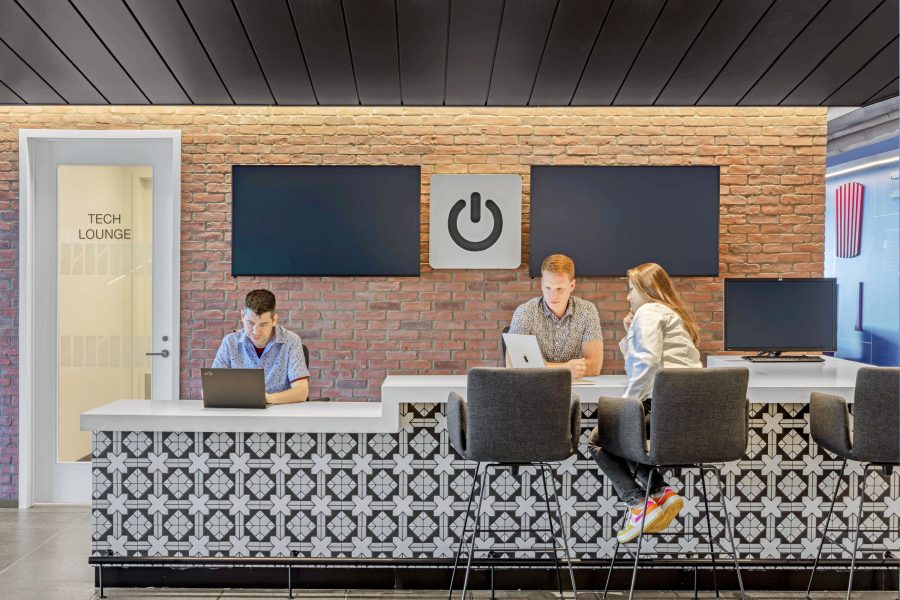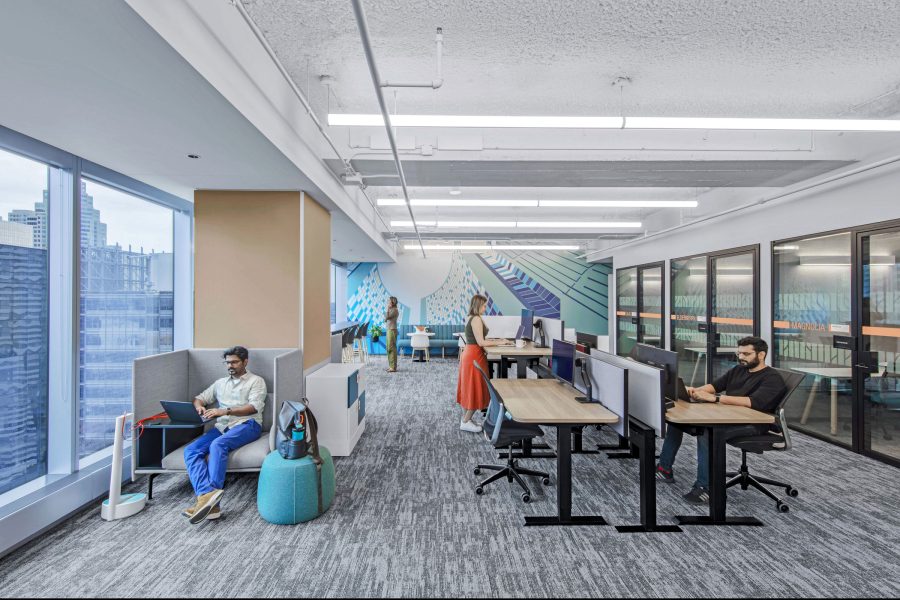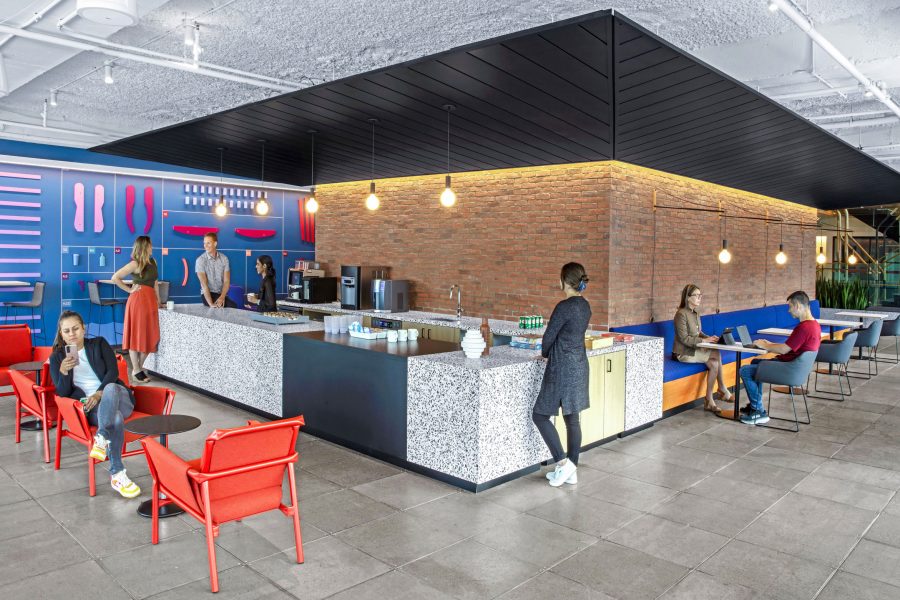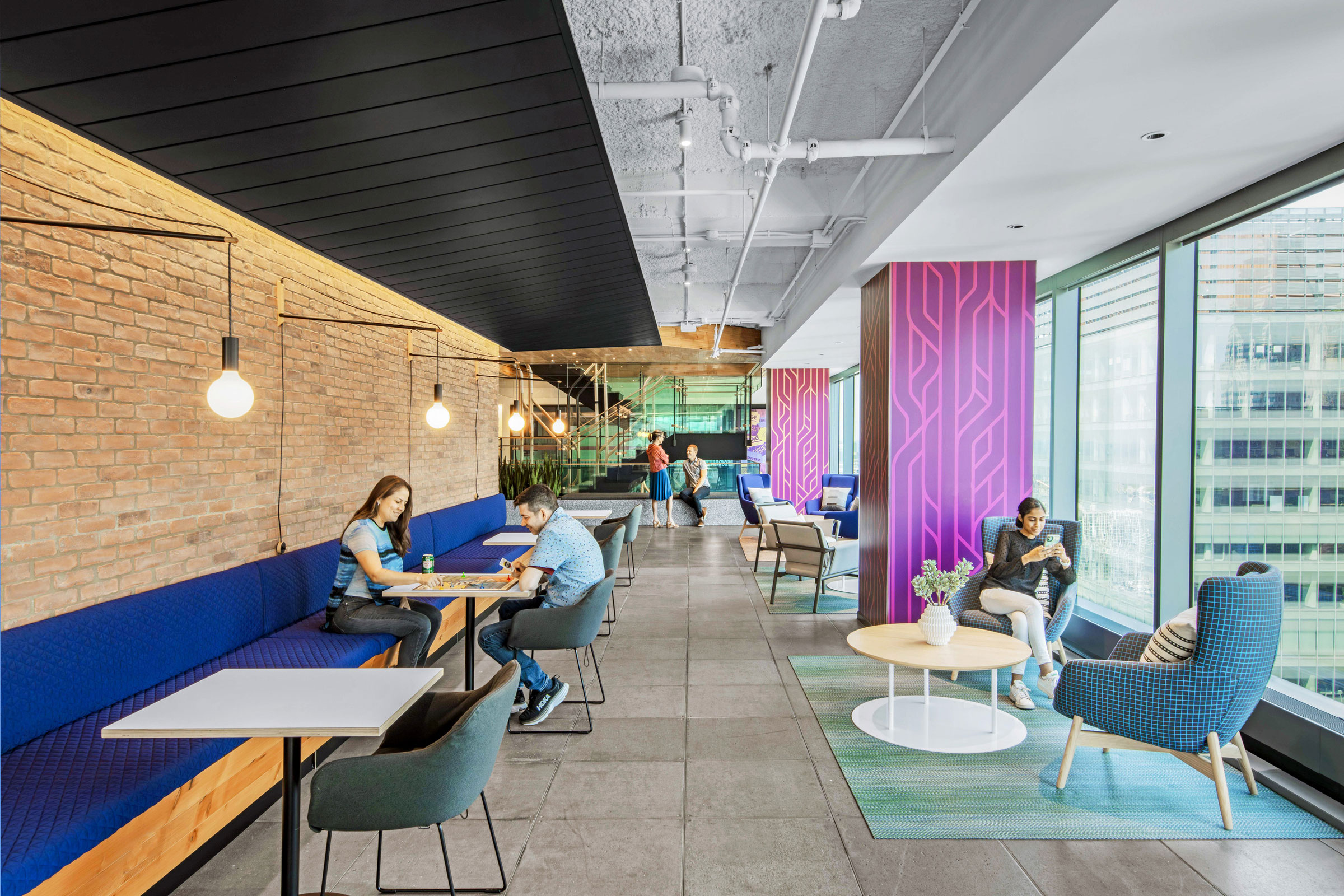Story at a glance:
- Today’s offices are competing with at-home setups, coffee shops, and even parks.
- LinkedIn’s new office in Toronto, designed by CannonDesign, features “desk-sharing neighborhoods” for tapered schedules balanced with enclosed rooms and pods for quiet meetings.
The increase in remote work opportunities coupled with the rapid advancement of workplace technology over the past few years has significantly altered how architects, developers, and employers conceive of contemporary office design.
“It has been proven that most work can happen anywhere,” says Peter McCarthy, principal and commercial leader at CannonDesign, a top architecture firm with nearly 1,300 employees across 18 offices. “This means workplaces are now competing against the comforts of home or an employee’s local coffee shop.”
These trends in office design have placed a greater emphasis on the overall experience that a workplace offers to employees. Workers now have far greater choice of where they can operate, and organizations are responding by creating new reasons for their workforce to return to the office.
The workplace is designed to be exceptionally adaptable.
The flexibility and adaptability of a workplace is key to accomplishing this. Office designs now include spaces for individual workstations as well as private meeting rooms, flexible conference and team collaboration spaces, as well as central common areas like cafes that can spark cross-team interactivity.

The CannonDesign LinkedIn project is LEED Platinum– and WELL Platinum–certified. Photo by Eric Laignel Photography
“The goal is not to have people come in, put their headphones on, and work independently,” McCarthy says. “Companies are creating spaces so that when people do come in, they can have town hall meetings, team collaboration, greater virtual connectivity—it’s about fueling work opportunities that cannot be realized from home.”
LinkedIn’s new office in Toronto offers an instructive case study of these trends. CannonDesign was awarded the project in 2019, but the onset of the Covid pandemic paused the project and led to a broader discussion between the design team and client about the future of the workplace. A new phased construction approach allowed the team to test different layouts, furniture and technology solutions, and the square footage of various spaces, and apply the best results.
“The idea behind the project was to create an ecosystem of connections,” McCarthy says. “The workplace is designed to be exceptionally adaptable and nimble to empower all different teams, technologies, and work styles into the future.”
There are few singular workstations at LinkedIn’s Toronto office, which features “desk-sharing neighborhoods” for tapered schedules balanced with enclosed rooms and pods for quiet meetings with clients. Visual elements were also incorporated, such as an environmental graphics program designed by Toronto illustrator Jeannie Phan that depicts a natural wonder of Canada on each of the company’s three floors.
“By creating that array of spaces, you give employees choices and companies flexibility to change and pivot spaces day-to-day and season-to-season as needed,” McCarthy says. “These efforts will also help instill deeper pride for employees in their organization.”

Workstations are flexible and part of “desk-sharing neighborhoods.” Photo by Eric Laignel Photography

CannonDesign designed LinkedIn’s new office in Toronto to have an ecosystem of connections. Photo by Eric Laignel Photography



